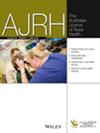Informing a Clinical Pathway for Acute Knee Injuries: Survey Insights From Rural Clinicians
Abstract
Introduction
Soft tissue knee injuries (STKIs) pose a significant healthcare challenge, particularly in rural settings with limited access to imaging and specialist consultation. This study aimed to evaluate current practices and challenges in diagnosing acute knee injuries in a rural setting and presented a pathway tailored for rural healthcare settings to improve diagnostic confidence, optimise imaging use, and streamline patient management.
Methods
A survey-based study was conducted among seventeen medical officers in six rural medical centres across New South Wales and Queensland. The survey involved a structured questionnaire on current practices and challenges. A structured rural pathway for acute knee injury was presented, and feedback was reported.
Results
Most clinicians assessed knee injuries weekly, showing variable confidence in their assessments and special tests. Key barriers identified included limited access to imaging, lack of specialist consultation, and diagnostic uncertainty, which led to increased referrals. The proposed pathway was rated highly intuitive, aligned with clinical guidelines, and was expected to streamline management.
Conclusion
The proposed pathway has clinical support and the potential to enhance knee injury management in rural settings by improving diagnostic accuracy, offering pathways aligned with the risk of injury, and promoting timely specialist care. Further research is necessary to assess long-term clinical outcomes and pathway integration across allied health services and rural healthcare facilities.


 求助内容:
求助内容: 应助结果提醒方式:
应助结果提醒方式:


